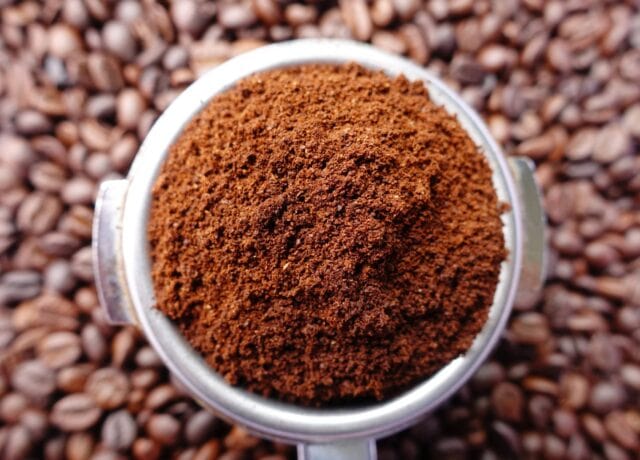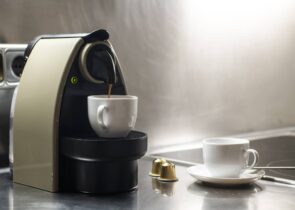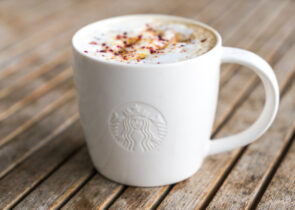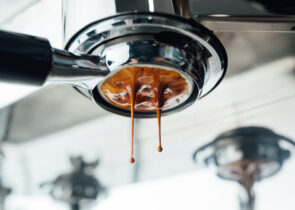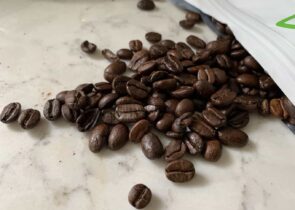When we hear the word “espresso,” we think of a delicious, quick shot of coffee to wake us up and enliven our mornings. The term “theory” brings to mind dusty tomes and boring philosophy classes. However, you might have heard baristas or coffee enthusiasts talking about “espresso theory” as they brew their shots of espresso. What is espresso theory, and how does it make coffee taste better?
What Is Espresso Theory?
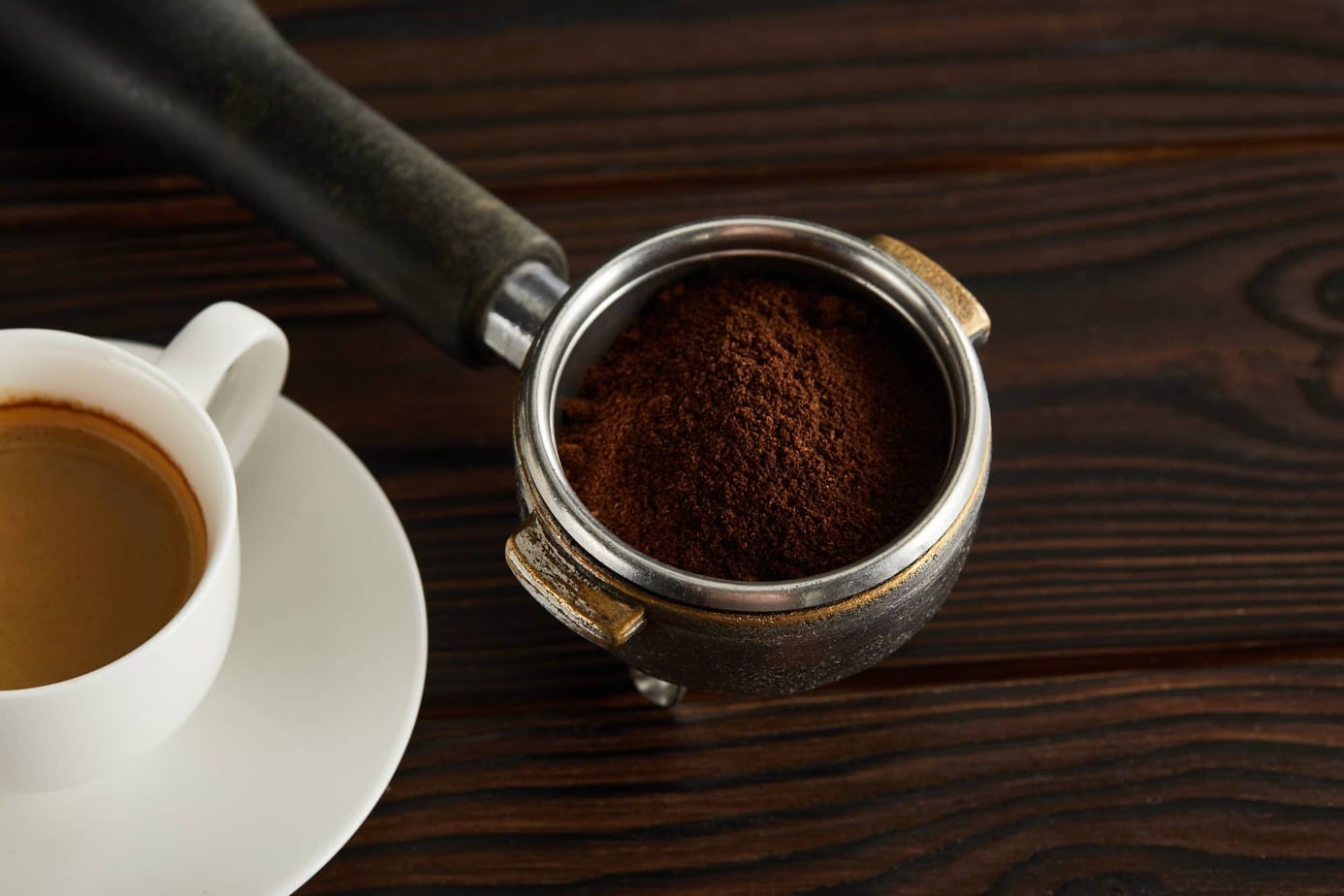
Whether you are a coffee lover and want to start making your espresso at home or you just discovered the difference between espresso and coffee, basic espresso theory can help you understand and brew better coffee.
In short, espresso theory is a fancy way of talking about how people brew their espresso coffee. It’s the theory of various ratios that make each espresso drink unique and how baristas make their specialty espressos. With a solid espresso foundation, you can brew espresso and tweak it to your exact taste.
There are three factors in espresso theory listed in order of importance: brew ratio, brew time, and brew temperature. Each of these factors affects the outcome of the coffee and how thick, rich, and dark the espresso shot is.
If you are beginning to brew espresso, knowing the different aspects is vital. You can ask a barista their ratio, temperature, and time to copy your favorite coffee shop’s espresso recipe at home. You’ll need coffee grounds and an espresso machine (or a French Press) to brew espresso.
Brew Ratio
The most significant espresso factor is the brew ratio. The brew ratio is the amount of coffee compared to the quantity of water you have, which will greatly affect the taste of your coffee. Espresso can be as potent as a 1:1 ratio for a standard shot of espresso or as weak as a traditional cup of drip coffee, which stands at 1:15.
In Italian espresso nomenclature, anything from 1:1 to 1:2 is called a ristretto espresso, 1:2 to 1:3 is a normale espresso, and 1:3 to 1:4 is a lungo espresso. It might be good to start with a normale and adjust your levels from there. If you’d like to try a variety of ratios, make each classic style of espresso and try them all to decide which you like best.
A smaller ratio means more robust coffee, and the mixture will be thicker and darker. Generally, these are the smallest cups of coffee since they contain so much caffeine. The larger your ratio, the thinner your espresso will be (until eventually, it becomes regular drip coffee). Darker roasts work well with smaller proportions and lighter roasts with larger ratios.
To adjust the brew ratio, you should weigh the amount of coffee you put into your machine or filter. The water is also weighed to complete the brew ratio. When you fill the basket, make sure you’re staying within your coffee maker’s limit by a gram or so. However, you can experiment with your brew ratio and find what works best for you.
Brew Time
Brew time is the amount of time the coffee takes to brew. It seems like an obvious explanation, but brew time isn’t adjusted by changing the time. Instead, the brew time depends on the level of fineness or coarseness in the grind of the coffee itself.
While the brew ratio is easily measured by weighing coffee and water, the brew time is measured by how long the water takes to soak through the coffee grounds and drip into the cup below. A finer ground coffee mix will take longer to brew than a coarse grind (think about the coffee dripping through sand versus rocks).
The longer a brewing time is, the richer and darker the coffee will be. As the water soaks through the coffee grounds, it extracts the flavors from the beans. Dark roast coffees work well with longer brew times. Light roasts work well when ground a little coarser–this will prevent the espresso from tasting tangy or too acidic.
Changing up your brew time will increase or decrease the richness of your coffee by small amounts. Grind your coffee beans to your preference and brew them to adjust your brew time. You can experiment with different fine and coarse grind settings with your different ratios and roasts, but a good target brew time is 25–35 seconds.
Brew Temperature
The brew temperature is one of the three pillars of espresso theory and the least customizable option. When making any coffee (except cold brew coffee), water needs to be at a specific temperature to extract the flavor of espresso properly.
While regular coffee is brewed at about 200-205℉, espresso should be a little cooler. Generally, 195℉ is a perfect temperature for any liquid espresso. There is a slight difference, however, between light and dark roasts.
If you have an espresso machine or electric water kettle that allows you to adjust the heat, you can experiment with raising or lowering the brew temperature by a degree or two. It might increase the potency of the flavors in your coffee.
To decrease the odds of acidic lighter roast espresso, you can raise the temperature a few degrees and make sure the brew time is shorter. On the other hand, darker roasts may benefit from a lower brew temperature.
Brew Roast
Although it’s not technically part of the three-step system of espresso theory, the factor that could make the most difference is the roast of the coffee you’re brewing. If you like darker, thicker, traditional espresso, a darker roast would be better for you. However, lighter roasts make thinner espressos.
Espressos are usually made from a darker roast. Dark roasts provide the thickness and richness of a standard espresso, especially when paired with a smaller brew ratio and a lower brew temperature.
Lighter roast espressos can have a wide variety of flavors but are harder to brew consistently. For this reason, most coffee shops and at-home baristas choose a darker roast to perfect their espresso blends.
In Theory
Now that you know what espresso theory is, you can use these espresso tips to your advantage when at a coffee shop or brewing espresso at home. Once you’ve mastered the perfect brew ratio, time, and temperature and decided what roast you like, every espresso you drink can be perfect!
Happy Caffeinating!


